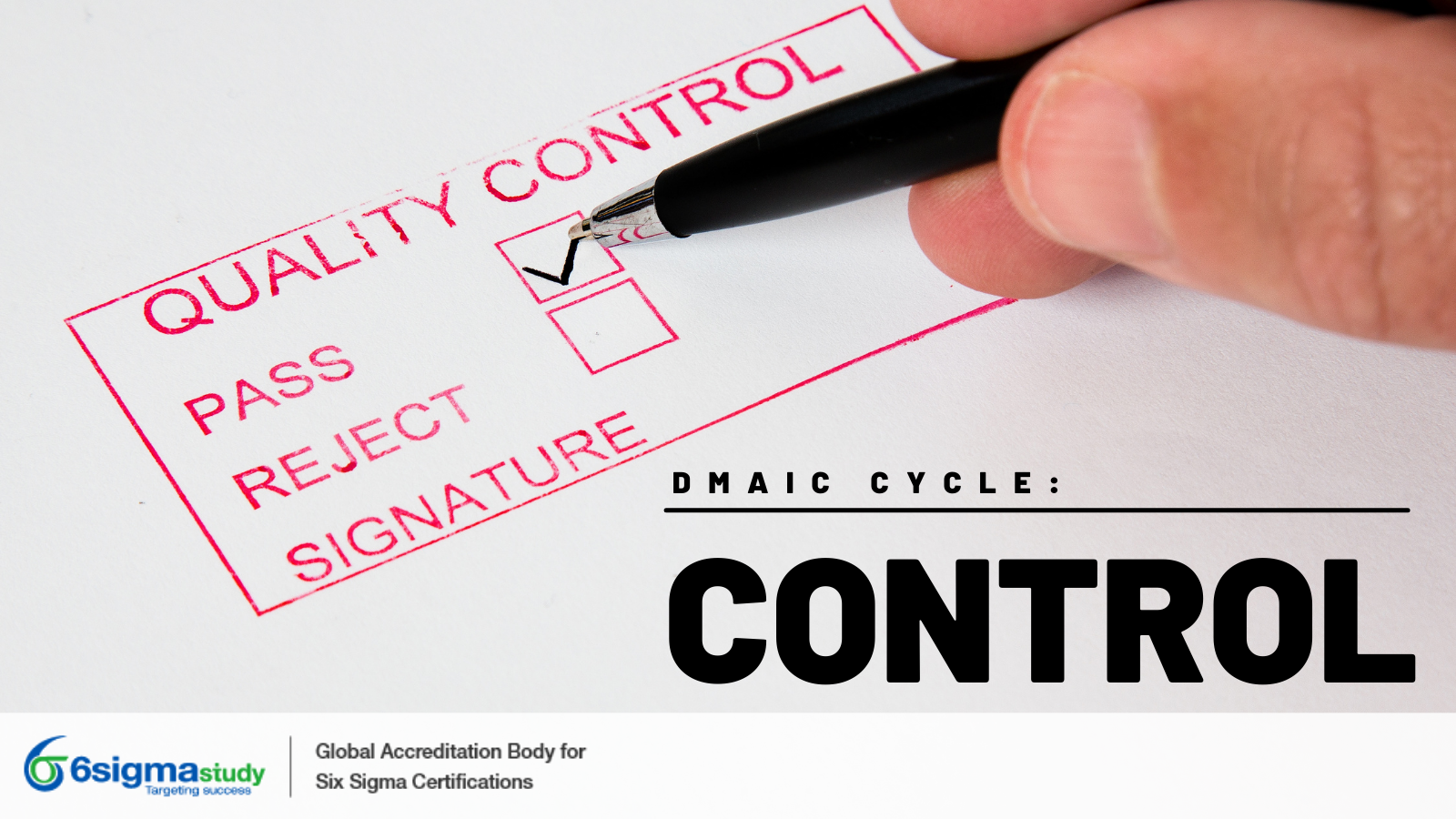Control Phase
Posted by 6sigmastudy® on July 11, 2021 | DMAIC & DMADV
Keywords: Six Sigma 6sigmastudy Six Sigma Yellow Belt (SSYB™) Six Sigma Green Belt (SSGB™) Six Sigma Black Belt (SSBB™) Lean Six Sigma Green Belt (LSSGB™) Lean Six Sigma Black Belt (LSSBB™) Free Articles Free Six Sigma Articles TQM Six sigma control dmaic
The ‘Control’ phase is the last phase of the Six Sigma DMAIC model. The main focus of this phase is to ensure that all the items that were created and the gains that were obtained in the ‘Improve’ phase of the DMAIC cycle are maintained long after the project has ended. Before this phase begins, one has a clear idea of the process and where it needs improvements through the use of the Define phase. The data are collected in the ‘Measure’ phase and assessed to determine the root causes in the ‘Analyze’ phase. Also, a viable solution is obtained in the ‘Improve’ phase. The ‘Control’ phase is the conclusion of the team’s journey and also of the DMAIC cycle. This phase is not so statistical intensive in comparison to the previous phases of the DMAIC cycle but holds great importance in project completion. The activities in the Control phase are as follows:
-
Establishing Statistical Process Control (SPC) and other controls.
-
Maintaining control.
-
Sustaining improvements.
This phase uses several tools. The tools that are most commonly used in this phase are as follows:
-
Statistical Process Control (SPC)
-
Total Productive Maintenance (TPM)
-
Visual Factory
-
Lean Tools (5S, Kanban, Kaizen, Poka-yoke)
The SPC is used based on the assumption that all processes are subjected to some sort of variations. The major causes of these variations can be classified into two categories:
-
Common (chance) causes of variation: It is inherent or natural in a process and is usually small in magnitude. It is difficult to identify and remove from the process.
-
Special causes of variation: These variations are caused due to some special causes and are mainly large in magnitude. It is easy to identify and remove from the process.
Apart from SPC, other control tools used in this phase include Total Productive Maintenance (TPM), Visual Factory, Kaizen, Kanban, Poka-yoke, and 5S. Total productive maintenance (TPM) is the systematic execution of maintenance by all employees through small group activities. It is a manufacturing-led initiative that emphasizes the importance of people, “can do” and “continuous improvement” philosophy, and the importance of production and maintenance staff working together. It is presented as a key part of an overall manufacturing philosophy. In essence, TPM seeks to reshape the organization to facilitate optimal utilization of its own potential. Some of the benefits of TPM are:
-
Increased team morale
-
Reduced manufacturing cost
-
Increased machine durability
-
Reduced accidents
-
Increased customer satisfaction
-
Increased productivity
Visual Factory is another tool that is used to create awareness among workers working on the shop floor at different locations in different shifts with the use of symbols, flowcharts, scoreboards, diagrams to bring consistency in the process as well as to build a safe, healthy workplace. Some of the benefits of the Visual Factory are:
-
Improves quality, productivity, safety, morale
-
Reduces waste, lead times
After establishing control, the step is to maintain it. So, it is important to perform a periodical reanalysis of the measurement system to ensure it is functioning as planned. A control plan helps in this regard. It is a systematic methodology to develop a data collection strategy for the process. It contains information about product and process characteristics. It states the control methods to be used, data to be collected, and steps to be taken if problems are detected.
The last step in this phase will be to sustaining the improvements brought about. Documentation from lessons learned can be helpful in continuing improvement and identification of additional opportunities. Training is also a very important component of a successful project. Training helps an organization sustain long-term improvements. And it also helps an employee in two ways—individual growth and organizational goal fulfillment.
For more such articles please visit here

